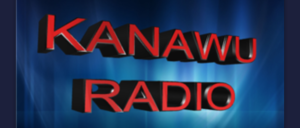The International Air Transport Association (IATA) presented new analysis showing that the airline industry cannot slash costs sufficiently to neutralize severe cash burn to avoid bankruptcies and preserve jobs in 2021.
IATA reiterated its call for government relief measures to sustain airlines financially and avoid massive employment terminations. IATA also called for pre-flight COVID-19 testing to open borders and enable travel without quarantine.
Total industry revenues in 2021 are expected to be down 46% compared to the 2019 figure of $838 billion. The previous analysis was for 2021 revenues to be down around 29% compared to 2019.
This was based on expectations for a demand recovery commencing in the fourth quarter of 2020. Recovery has been delayed however, owing to new COVID-19 outbreaks, and government mandated travel restrictions including border closings and quarantine measures.
IATA expects full year 2020 traffic to be down 66% compared to 2019, with December demand down 68%.
“The fourth quarter of 2020 will be extremely difficult and there is little indication the first half of 2021 will be significantly better, so long as borders remain closed and/or arrival quarantines remain in place. Without additional government financial relief, the median airline has just 8.5 months of cash remaining at current burn rates. And we can’t cut costs fast enough to catch up with shrunken revenues,” said Alexandre de Juniac, IATA’s Director General and CEO.
Although airlines have taken drastic steps to reduce costs, around 50% of airlines’ costs are fixed or semi-fixed, at least in the short-term. The result is that costs have not fallen as fast as revenues.
For example, the year-on-year decline in operating costs for the second quarter was 48% compared with a 73% decline in operating revenues, based on a sample of 76 airlines.
Furthermore, as airlines have reduced capacity (available seat kilometers, or ASKs) in response to the collapse in travel demand, unit costs (cost per ASK, or CASK) have risen, since there are fewer seat kilometers to ‘spread’ costs over. Preliminary results for the third quarter show that unit costs rose around 40% compared to the year-ago period.
Looking forward to 2021, IATA estimates that to achieve a breakeven operating result and neutralize cash burn, unit costs will need to fall by 30% compared to average CASK for 2020. Such a decline is without precedent.
Factors contributing to this analysis include:
With international demand down nearly 90%, airlines have parked thousands of mostly long-haul aircraft and shifted their operations to short haul flying where possible. However, because the average distance flown has fallen sharply, more aircraft are required to operate the network.
Thus, flown capacity (ASKs) is down 62% compared to January 2019, but the in-service fleet is down just 21%.
Around 60% of the world aircraft fleet is leased. While airlines have received some reductions from lessors, aircraft rental costs have dropped less than 10% over the past year.
It is critical that airports and air navigation service providers avoid cost increases to fill gaps in budgets that are dependent on pre-crisis traffic levels. Infrastructure costs have fallen sharply because of fewer flights and passengers. Infrastructure providers could cut costs, defer capital expenditures, borrow on capital markets to cover losses or seek government financial relief.
Fuel is the only bright spot with prices down 42% on 2019. Unfortunately, they are expected to rise next year as increased economic activity raises energy demand.
While IATA is not advocating specific workforce reductions, maintaining last year’s level of labor productivity (ASKs/employee), would require employment to be cut 40%. Further jobs losses or pay cuts would be required to bring unit labour costs down to the lowest point of recent years, a reduction of 52% from 2020 Q3 levels.
Even if that unprecedented reduction in labor costs were to be achieved, total costs will still be higher than revenues in 2021, and airlines will continue to burn through cash.
“There is little good news on the cost front in 2021. Even if we maximize our cost cutting, we still won’t have a financially sustainable industry in 2021,” said de Juniac.
“The handwriting is on the wall. For each day that the crisis continues, the potential for job losses and economic devastation grows. Unless governments act fast, some 1.3 million airline jobs are at risk. And that would have a domino effect putting 3.5 million additional jobs in the aviation sector in jeopardy along with a total of 46 million people in the broader economy whose jobs are supported by aviation.”
“Moreover, the loss of aviation connectivity will have a dramatic impact on global GDP, threatening $1.8 trillion in economic activity. Governments must take firm action to avert this impending economic and labor catastrophe. They must step forward with additional financial relief measures. And they must use systematic COVID-19 testing to safely re-open borders without quarantine,” said de Juniac.
 Kanawu Radio number 1 news portal
Kanawu Radio number 1 news portal
